- Published 24 Jan 2023
- Last Modified 29 Aug 2023
- 8 min
A Complete Guide to Mains Sockets and Plugs
Our mains sockets & plugs guide explores their uses and how they work, plus the different types that are available.

What are Mains Sockets?
Mains sockets and plugs connect electrical equipment to the alternating current (AC) power supply. They are used in domestic homes, commercial properties, and other sites.
There are various types of mains sockets and plugs. Electrical sockets and plugs have a range of different specifications, including voltage, current rating, mounting type, physical dimensions, and connector type. It is also worth noting that there is no single global standard. Instead, multiple standards for plugs and sockets are used in different countries.
Mains Plug Types
Many different types of mains plugs are available, each suited to different applications and varying international standards. You can find a comprehensive chart listing all the different plug types plus a useful resource detailing all international plug standards by country in our complete guide to travel adapters.
However, some of the main types that you may encounter are also listed below:
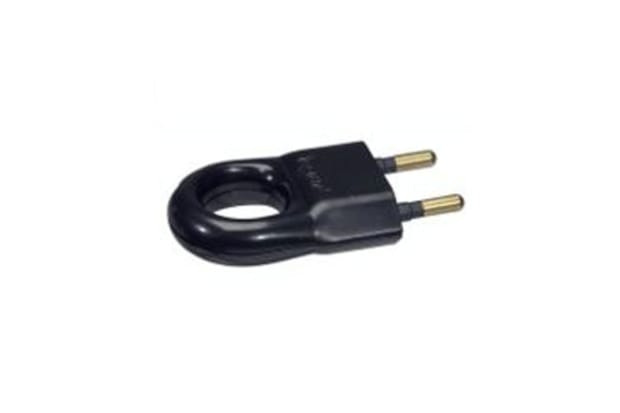
Type C Plugs
Also known as the Europlug, the type C electrical plug is a two-wire plug which features two round pins. Type C outlets generally run on 220V-240V and are only usable for devices which use 2.5 Amps or less.
Type C plugs are typically used in the majority of countries across mainland Europe. Notable European exceptions include the UK, Ireland, Cyprus and Malta.
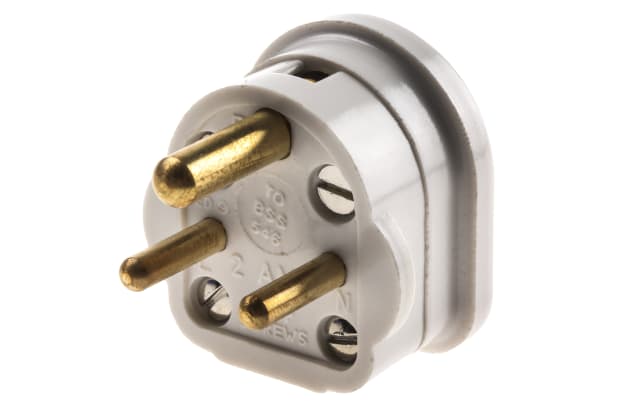
Type D Plugs
The type D electrical plug features three large, round pins which are presented in a triangular formation. Type D plugs are rated at 5 Amps.
These plugs are typically used in countries including India, Sri Lanka, Nepal, and Namibia.
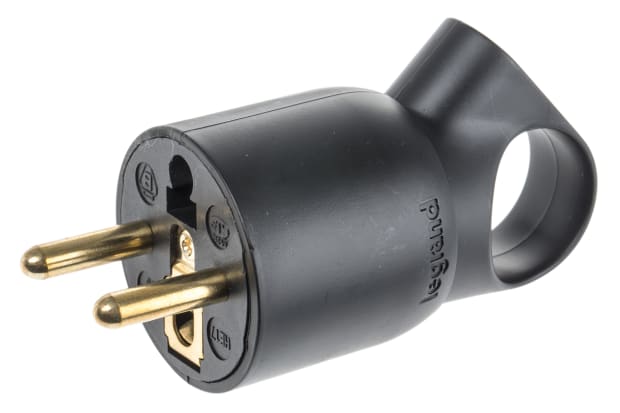
Type E Plugs
The type E plug features two round pins measuring 4.8mm. These pins are spaced at 19mm apart alongside a hole for the socket’s male earthing pin. These plugs are rated at 16 Amps.
It is also worth noting that new type E plugs can incorporate side-swiping earth contacts that are suitable for type F sockets. These exist for compatibility between type E and type F, in addition to the round earth hole as type E sockets have an earth pin. Type E electrical plugs are typically used in a selection of countries such as France, Belgium, Slovakia, and Tunisia.
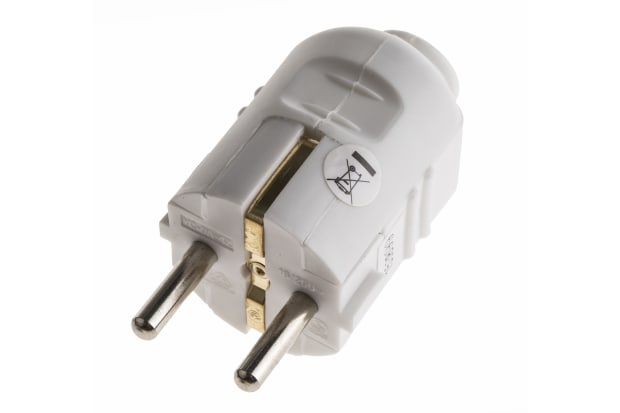
Type F Plugs
Also known as the Schuko plug, the type F plug is quite similar to the type E electrical plug and therefore, also features the side swiping earth contacts for compatibility as mentioned above. Type F plugs feature two round pins which measure 4.8mm and the pins are spaced 19mm apart. They are rated at 16 Amps.
These plugs are in use across many European countries, including Germany, Austria, Spain, and the Netherlands.
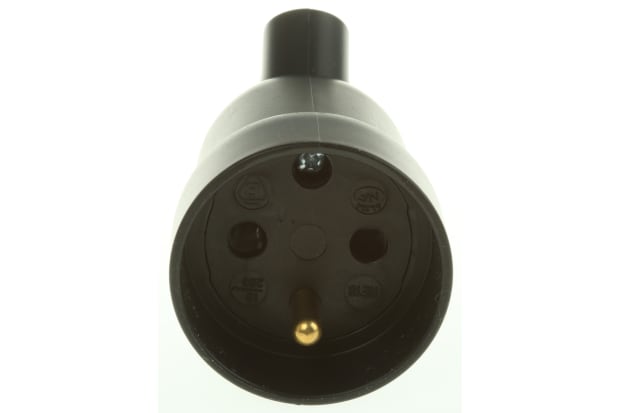
Type E and Type F Compatibility
Standards changed with the introduction of CEE 7/7. In order to ensure that type E and type F are compatible, the side swiping earth was introduced with earth holes or pins on sockets and plugs. Type F sockets will feature side swiping clips internally, whereas type E sockets will have the pin in place and therefore, type F plugs have the hole to ensure they can be used with type E sockets.
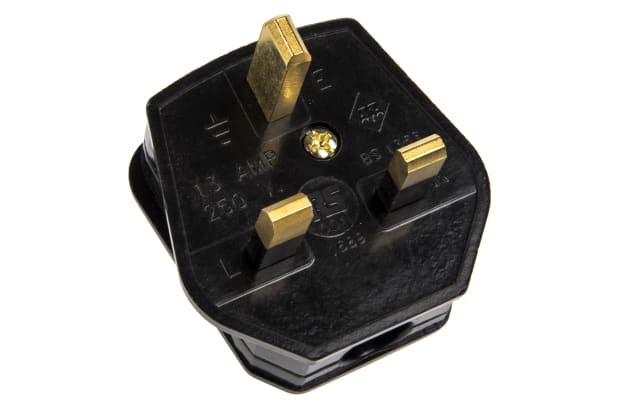
Type G Plugs
The type G plug features three rectangular blades positioned in a triangular pattern. These plugs also feature incorporated fuses. Type G electrical plugs are rated between 3 Amps and 13 Amps, depending on the socket outlet.
These plugs are used in the UK as well as other countries including Ireland, Cyprus, Malta, Malaysia, and Singapore.
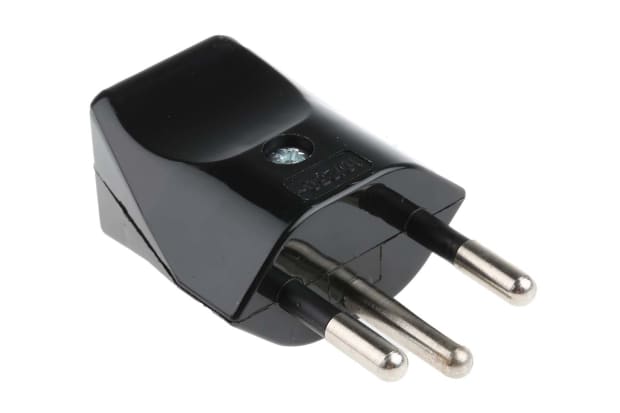
Type J Plugs
The type J plug features two round pins, in addition to a grounding pin. They are rated at 10 Amps.
Type J electrical plugs are typically used in Switzerland and Lichtenstein.
Types of Mains Sockets
In addition to the various plug types explained in the above sections, there are multiple different types of mains plug socket available. Each is best suited to varying applications, and the advantages differ between socket types.
Some of the core mains socket types are explored in greater detail below:
USB Mains Sockets
A USB mains socket can be found as an additional accessory on a standard mains plug socket. The USB port can typically be located on either the top or the side of the socket.
USB mains sockets are becoming increasingly common in the UK. They are seen as a simple way to quickly attach devices such as mobile phones for easy charging. A mains plug with USB socket can enable the user to either power or charge their appliance with the use of a USB cable.
Remote-Control Mains Sockets
A remote-control mains socket allows the user to select the socket that they would like to be active. Remote mains sockets work by plugging the receiver socket into the wall, then plugging the device or appliance into the socket.
For example, a remote might feature five buttons. Each button on the remote corresponds to a particular socket. When the first button on the remote is pressed by the user, the corresponding socket is turned on. In turn, the device or appliance is also turned on.
Remote-control mains sockets are useful, offering the potential for a greater level of automation and better-connected environments. Remote-control mains socket adaptors are also available to simplify the process and ensure a straightforward connection.
Mains Timer Sockets
A mains timer socket allows the user to set a timer for the duration they want the socket to be active. This works on a similar principle to automatic lights which are only switched on during pre-set active hours.
Digital mains timer sockets can also prove useful in commercial and industrial environments. This way, sockets can be set to only activate during specified operational hours, remaining inactive overnight or outside of usual working hours.
Mains Socket Mounts
Mains socket mounts are the components used to mount the socket when it is attached to the wall and connected to the circuit.
Various mains socket mount types are available, each best suited to different uses and applications. Some of the key types are listed below:
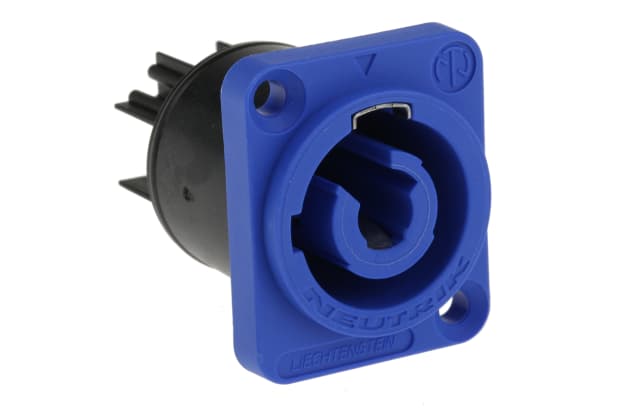
Panel Mount Mains Sockets
Panel mount mains sockets are among the most popular mains plug socket mount types available. They are highly functional and simple in design, providing a trusted mounting method. Advantages include the direct attachment of the connector and the panel, removing the potential for external strain on delicate electrical components.
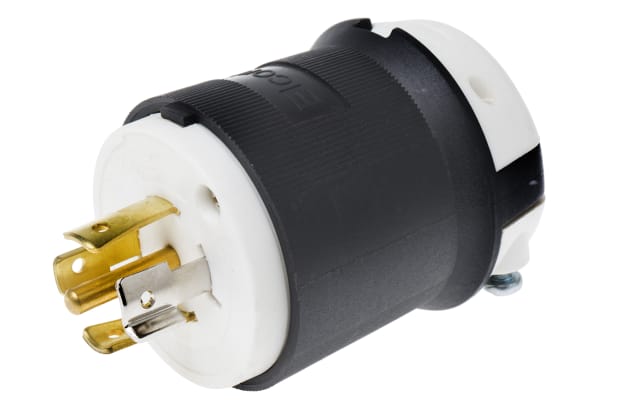
Cable Mount Mains Sockets
Cable mount mains sockets are durable and reliable, as well as being well suited to a diverse range of applications. They are widely used in a variety of environments and are in widespread use today.
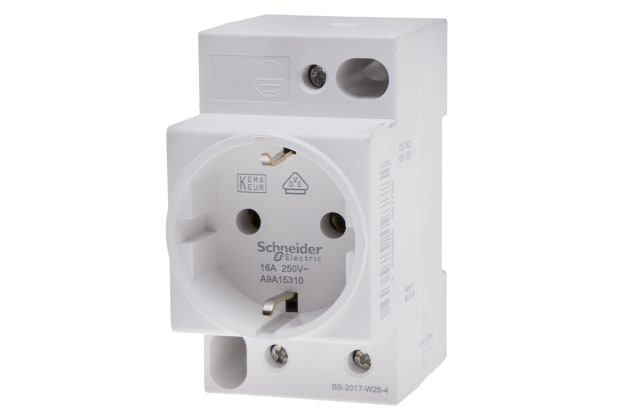
DIN Rail Mount Mains Sockets
DIN rails are metal rails widely used for mounting devices such as circuit breakers inside equipment racks. They are advantageous due to their versatility, and they can be used with an extensive range of components. DIN rail mount mains sockets are typically used in industrial applications.

Plug-In Mount Mains Sockets
Plug-in mount mains sockets are less widely used than some of the other types, but they are more common in certain European countries such as France and Germany. They are hard-wearing and typically provide features such as strain relief.
Mains Sockets by Gender
Another way to classify mains sockets is by the gender of the components. Both male and female mains sockets are available, each suited to different applications.
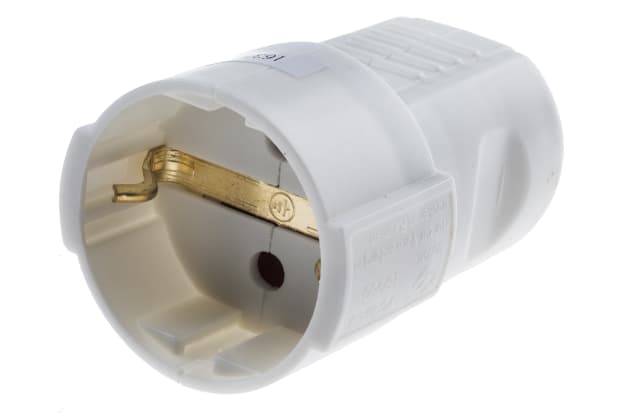
Female Mains Sockets
Female mains sockets feature a recessed hole. They are designed to comfortably house male plugs (plugs with exposed pins) and create a reliable electrical connection.
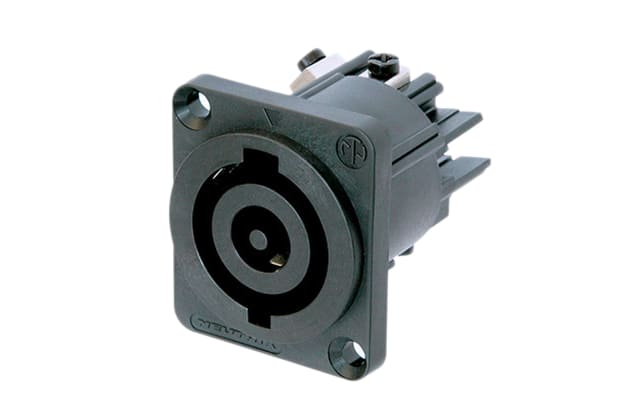
Male Mains Sockets
Male mains sockets are the plugs with exposed pins which fit into female mains sockets. This connection is designed to provide a secure hold, ensuring a strong electrical connection.
Mains Socket Wiring
Understanding how to wire a plug socket to the mains is vital for electricians and professionals working with electrical circuits. Please note that electrical work should only be carried out by fully qualified professionals and health and safety should be kept firmly in mind at all times when working with electricity, circuitry, and electrical components.
The process for wiring a plug socket to the mains is as follows:
- Ensure the power is turned off at the mains
- Remove the faceplate and carefully pull the socket out from the wall to access the rear of the faceplate
- Take note of the wiring on the reverse of the faceplate. This will vary depending on the age of the circuit, but it is important to record where each wire and terminal should be connected
- Remove the screws which connect the cables to the faceplate
- Fit the new faceplate carefully into the wall
- Once complete, turn the power back on and test the socket using a voltage checker
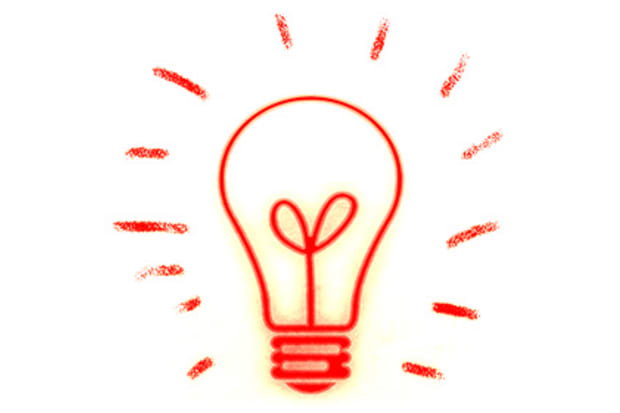
How Many Sockets on a Ring Main?
The IET wiring regulations (BS 7671) allow an unlimited quantity of 13A sockets to be installed on a ring circuit, so long as the floor area these socket outlets serve is not larger than 100m². These sockets can be unfused single or double, or any number of fused outlets.